Looking at the huge, colour-saturated prints by Helen Frankenthaler (1928–2011) currently on display at Princeton University Art Museum will lift your spirits, and may make you dance right there – or return home to try your hand at printmaking. For Frankenthaler turned upside down the long-held, demanding rules for etching, lithography and other printing processes. During her five decades of free and sometimes audacious experimentation – mixing techniques, inventing new ones and playing with colour – she made a contribution to American art as significant as that of her better-known Abstract Expressionist paintings.
The show at Princeton, titled ‘Helen Frankenthaler Prints: Seven Types of Ambiguity’, is the first exhibition to emerge from the Frankenthaler Prints Initiative, conceived by the Helen Frankenthaler Foundation. The foundation’s aim is to promote the artist’s legacy as well as greater public interest in and understanding of the visual arts, through shows, artwork loans, grants, workshops, and more. The new prints initiative fits right into this: a gift to 10 US college museums of a selection of Frankenthaler’s prints and proofs, together with a grant of up to $25,000 for a project that uses them well.
‘In 2018, we generated the concept and invited the applicants,’ explains Elizabeth Smith, the foundation’s executive director. With Ruth Fine (who worked with Frankenthaler on her exhibition at the National Gallery of Art in Washington, D.C. in 1994) serving as adviser, the foundation sought out museums across the US, which took prints seriously and already used them in their education programmes, but lacked a range of Frankenthaler’s work. Its choice includes the Grunwald Center for the Graphic Arts at the Hammer Museum at UCLA, the University of Texas’s Blanton Museum of Art, and the Rhode Island School of Design (RISD) museum. ‘We had a clear idea of the outcome we hoped for. We wanted each museum to decide how to use them, to make their own proposal – perhaps an exhibition, a semester-long course about prints, a printmaking course led by printmakers.’ She hopes this will continue to be a programme ‘in process, though not necessarily annual’, and welcomes enquiries.
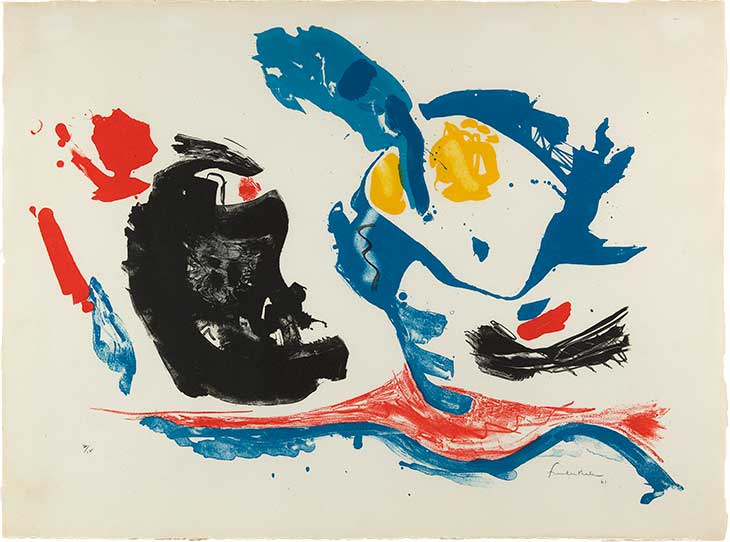
First Stone (1961), Helen Frankenthaler. © 2019 Helen Frankenthaler Foundation, Inc./Artists Rights Society (ARS), New York/Universal Limited Art Editions, West Islip, New York
The gift to Princeton responds to the museum’s already rich holdings of modern prints, drawings, works on paper and photographs. ‘It dramatically enriches the museum,’ says Mitra Abbaspour, co-curator with Calvin Brown of the current exhibition. ‘By targeting university-affiliated museums,’ she continues, ‘the foundation is truly addressing its mission, securing generations of scholarship. These museums are laboratories for study.’
As Brown explains: ‘Frankenthaler liked to stay in control of the whole process, though she depended on specialist printers. She was inventive, engaged, deeply involved in each technique.’ Other core participants in the American print renaissance – Stella, Rauschenberg, Johns – were, he says, less involved in the production side of things. ‘Frankenthaler is up there mixing the precise tone of paint herself or experimenting with tone, line and form and how they fit together. She’s intimately involved with the ink itself.’ He sums up: ‘There was never a point where she let others translate for her’.
The 15-piece gift, which is presented alongside loans from the foundation and elsewhere (as well as historical prints by artists including Degas and Goya), spans Frankenthaler’s career. The proofs are more intriguing to study than the finished prints, which were produced in small editions and which exist often in lower numbers than the long chain of developing proofs. Frankenthaler worked with various leading print workshops including Universal Limited Art Editions (ULAE) in New York City, the upstate Tyler Graphics (run by master printer Kenneth Tyler), and Crown Point Press in San Francisco. It enabled her to push technical boundaries with different printmakers. The show is careful to reflect this, with more than 50 prints – from lithographs and woodcuts to etchings and engravings, as well as hybrid pieces – arranged in seven loosely chronological sections.
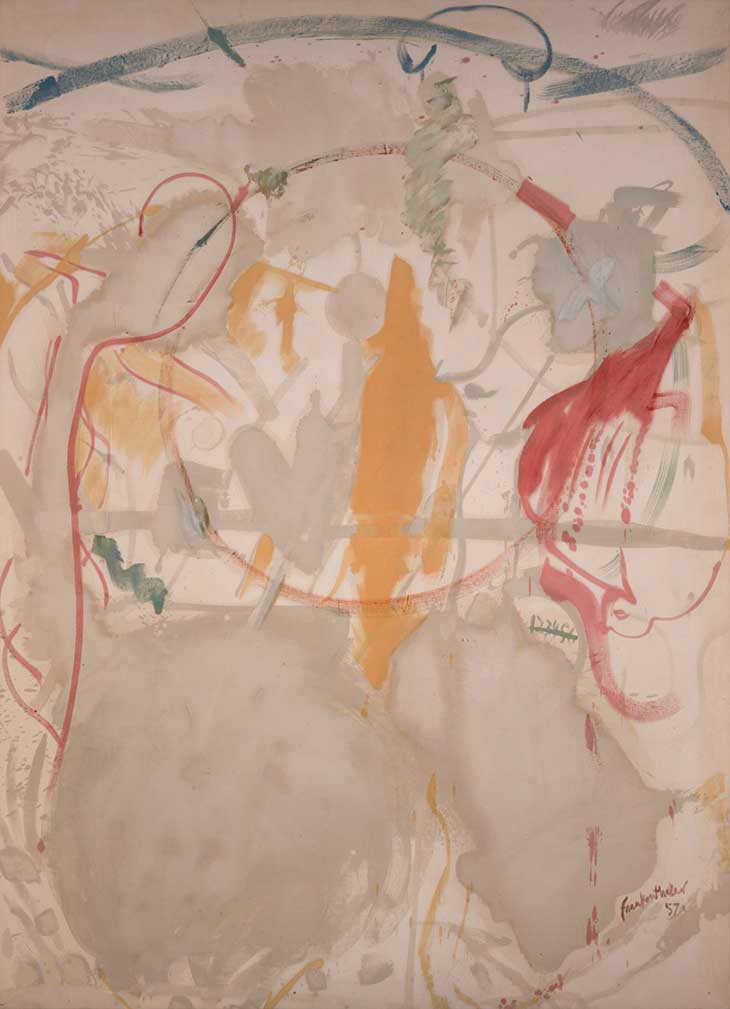
Seven Types of Ambiguity (1957), Helen Frankenthaler. Crystal Bridges Museum of American Art, Bentonville.
© Helen Frankenthaler Foundation/Artists Rights Society (ARS), New York
The artist’s earliest work in the exhibition is not a print but a painting. Frankenthaler was familiar from her college days with William Empson’s Seven Types of Ambiguity, which the Princeton show takes as its subtitle and inspiration. Written in 1930, the book discusses the kinds of ambiguity of expression found in poetry. It was keenly read by the artists of the New York School as they explored paint’s expressive potential. Frankenthaler would make an oil painting with this title in 1957, applying poured and brushed paint to unprimed canvas – her characteristic ‘soak-stain’ technique. Three years later it hung in her first museum retrospective, curated by Frank O’Hara at the Jewish Museum in New York. It is a coup for Princeton to have borrowed the painting from the Crystal Bridges Museum of American Art, and to hang it ahead of the prints to set the tone.
Frankenthaler created her first colour lithograph, First Stone, in 1961, on the invitation of ULAE’s Tatyana Grossman. With no training in printmaking, she used her fingers, brushes, crayon and washes of tusche (black lithographic ink), developing the same gestural style found in her paintings. Moving through the show, Frankenthaler’s experimental approach – playing with variations in colour, manipulating the inks on the lithographic stone, leaving bare stretches of paper, introducing stencilling (called ‘pochoir’) – is consistently evident. For Dream Walk, printed by Tyler Graphics in 1977, the foundation has given the museum one print and four trial proofs, a perfect package for studying Frankenthaler’s working method. ‘Tyler was a terrific lithographer, a cornerstone in printmaking as an art form, and he made his paper in his own mill,’ says Abbaspour. ‘See how her heavy dark passages drift into wash. This is very difficult to process and Tyler does a great job, working with her, experimenting with different coloured papers and ink.’
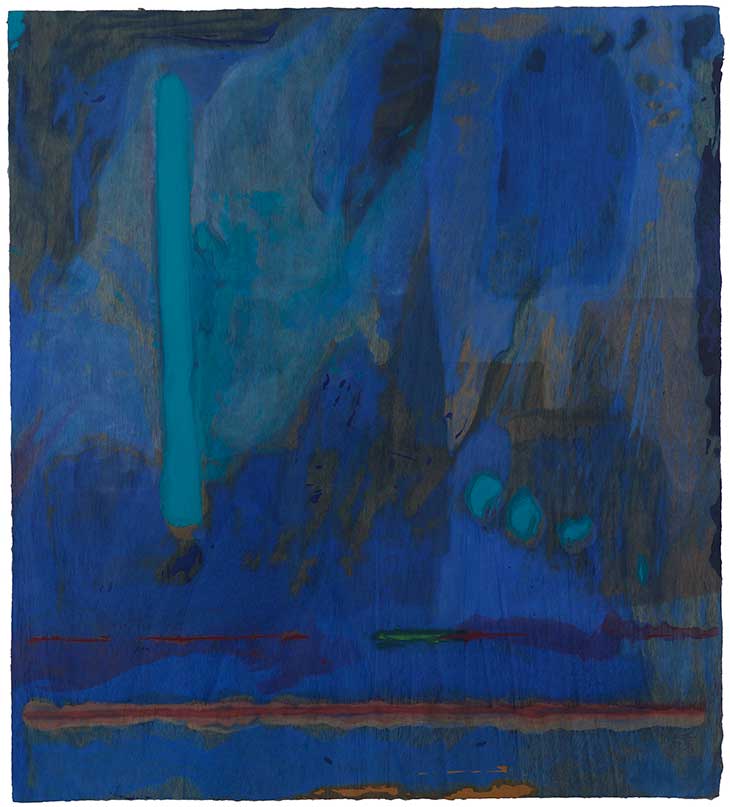
Tales of Genji III (1998), Helen Frankenthaler. © 2019 Helen Frankenthaler Foundation, Inc./Artists Rights Society (ARS), New York/Tyler Graphics, Ltd., Mount Kisco, New York
Frankenthaler sought out different printmakers to collaborate with; perhaps change stimulated her creativity. One would push her towards new processes, such as Mixografia, which fuses sculpture, printmaking and painting; another would seduce her to Barcelona where, during a highly productive ten-day stay, she mixed lithography with etching, drypoint and photolithography to create prints including Un Poco Más (1987) and Ramblas (1987–88). Woodcut, which she first explored in the mid 1970s with ULAE, was a medium she took to new limits. Later, she worked with craftsmen in Japan and at Tyler Graphics with Yasuyuki Shibata, who was trained in Japanese ukiyo-e woodcut printing, on the major project Tales of Genji (1998). She used watercolour on distressed wood, let ink bleed on damp paper, and, in one print, incorporated an incredible 14 blocks and 41 colours. Kenneth Tyler called it ‘woodcut with painterly resonance’. Her final print is Weeping Crabapple, another foundation gift, a woodcut printed and published by Pace Editions in 2009.
To the end of her long career, Frankenthaler relished the freedom offered by the techniques she developed, her work exuding freshness and joy as she pushed the boundaries of print. Indeed, this exhibition suggests that she may have preferred the collaborative, interdisciplinary work of printmaking to that of painting.
‘Helen Frankenthaler Prints: Seven Types of Ambiguity’ is at the Princeton University Art Museum until 20 October.
Unlimited access from just $16 every 3 months
Subscribe to get unlimited and exclusive access to the top art stories, interviews and exhibition reviews.

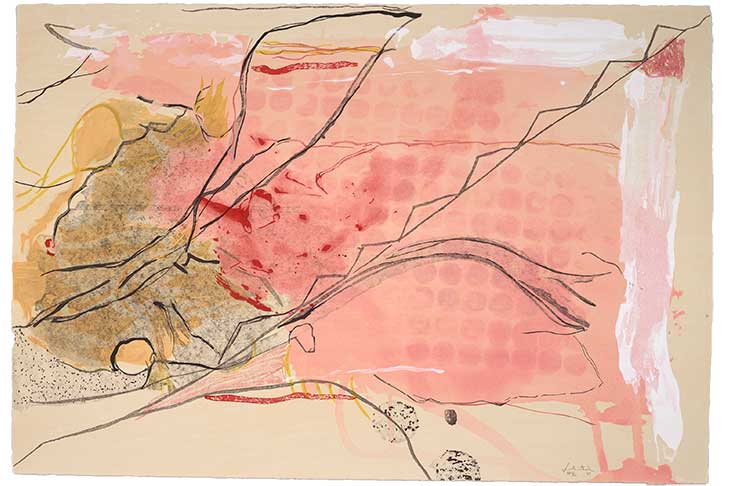
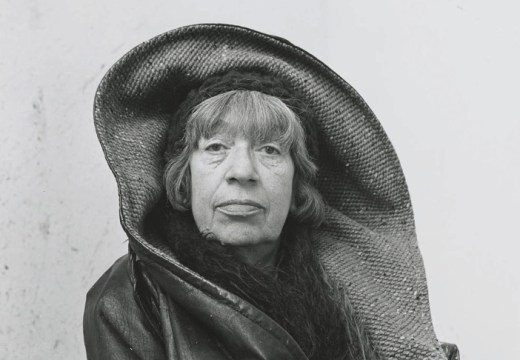
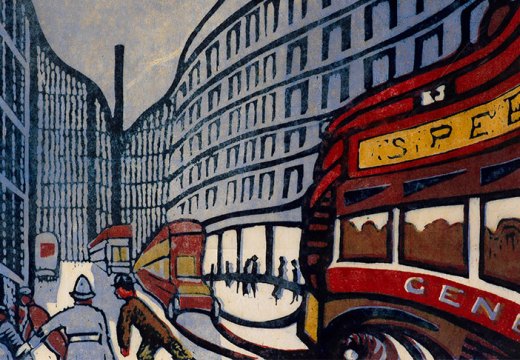
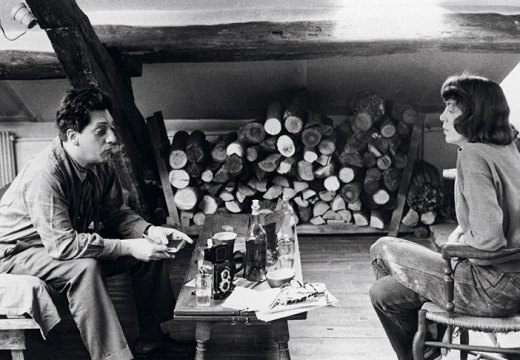









![Masterpiece [Re]discovery 2022. Photo: Ben Fisher Photography, courtesy of Masterpiece London](http://www.apollo-magazine.com/wp-content/uploads/2022/07/MPL2022_4263.jpg)
It’s time for the government of London to return to its rightful home